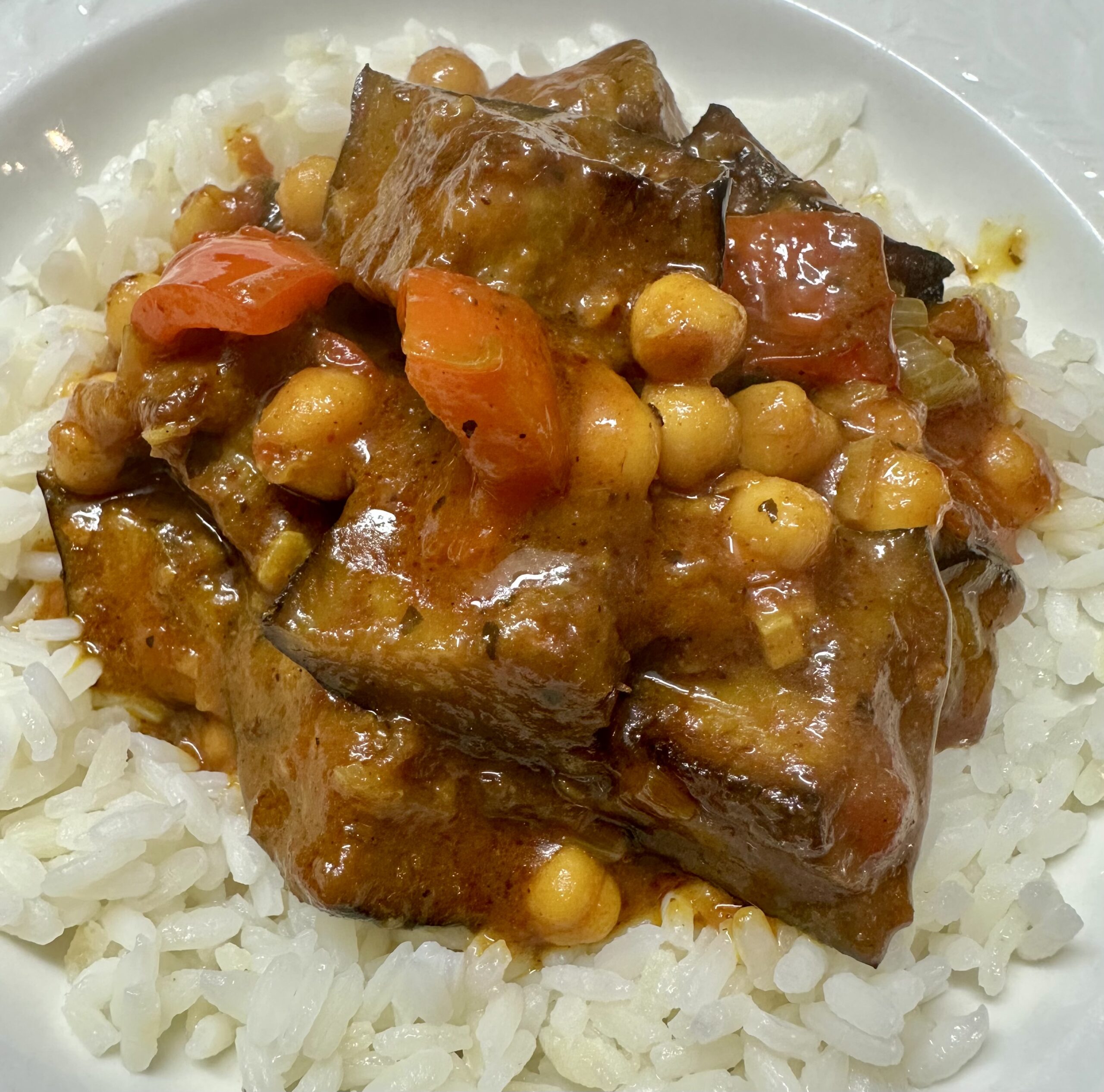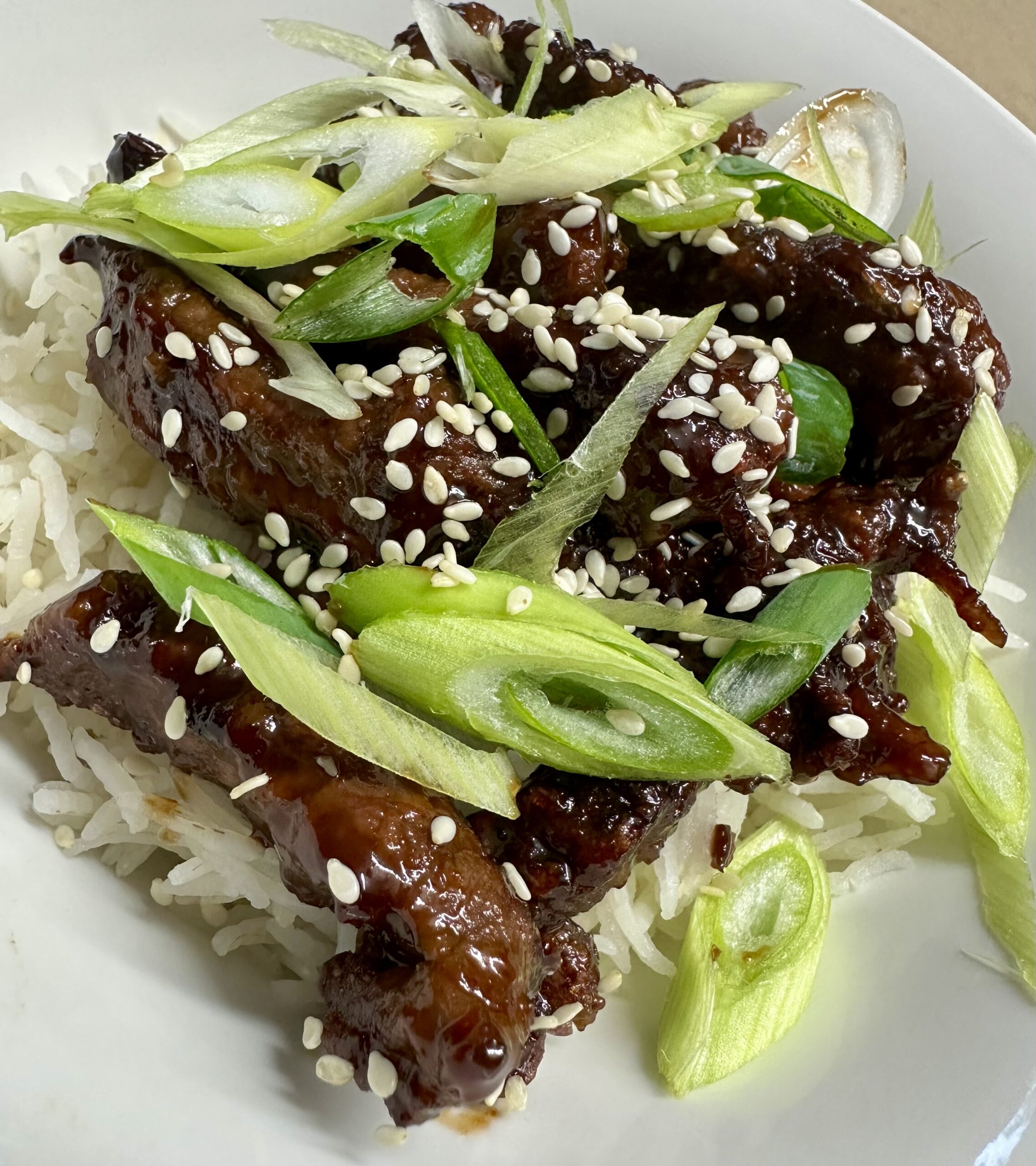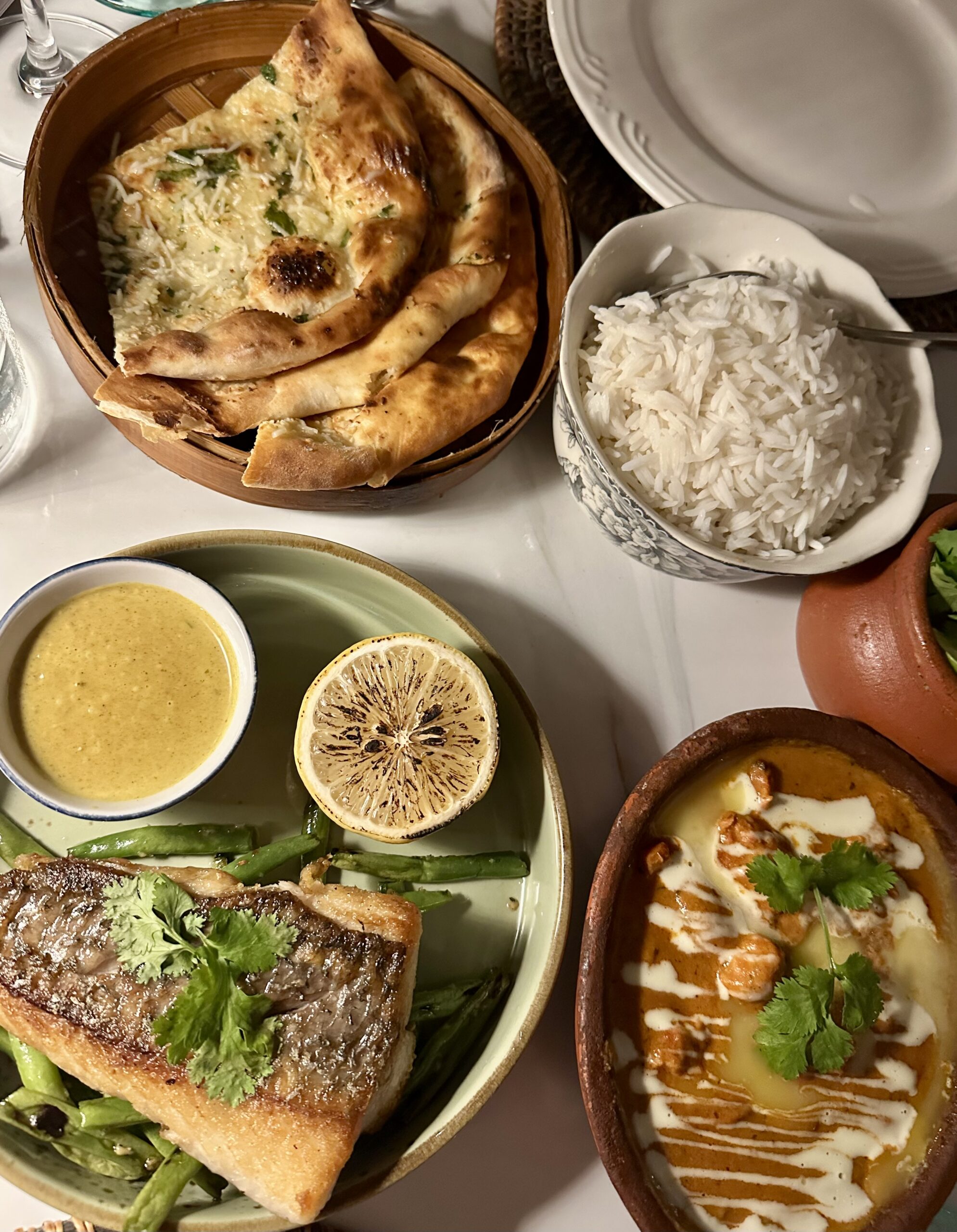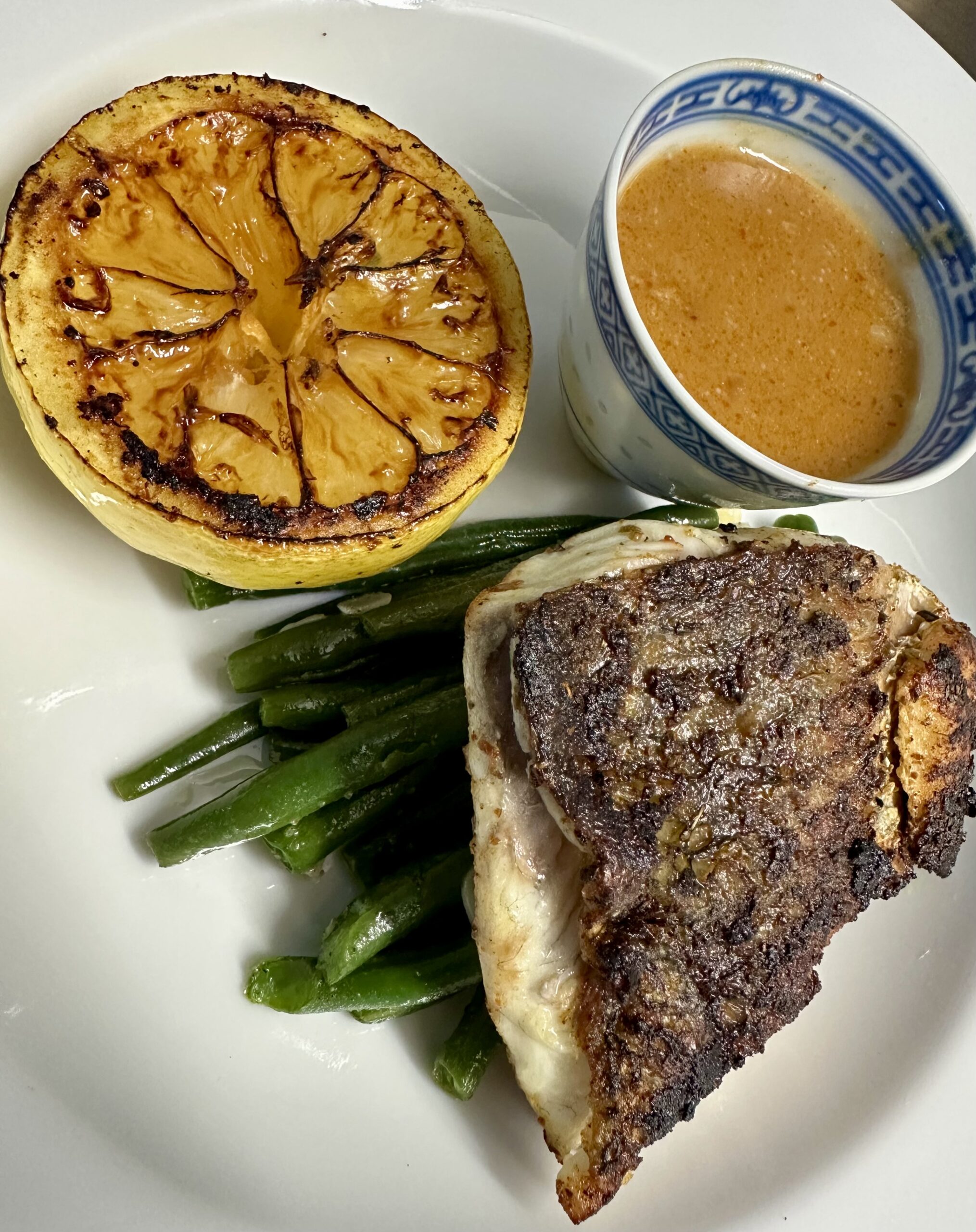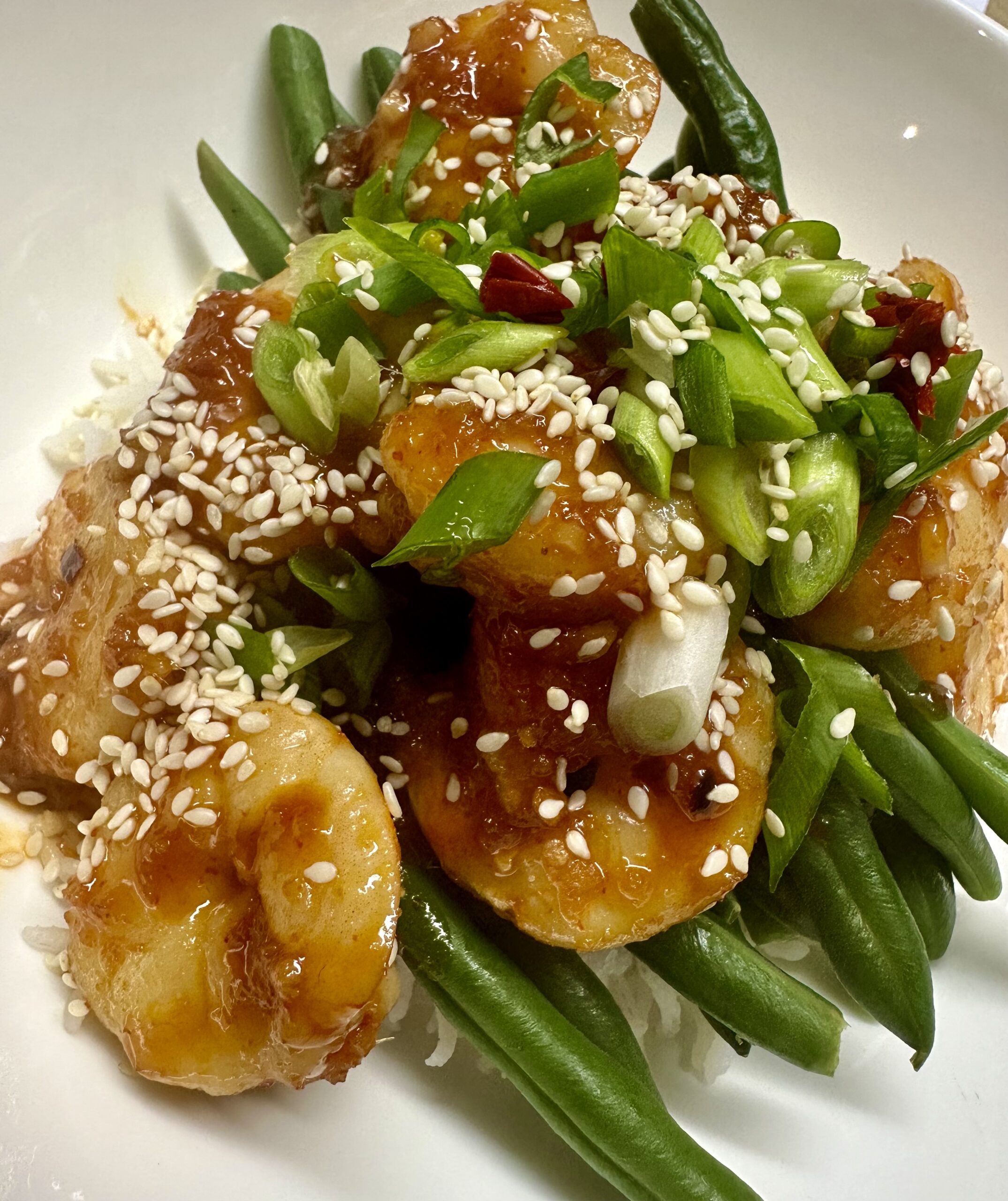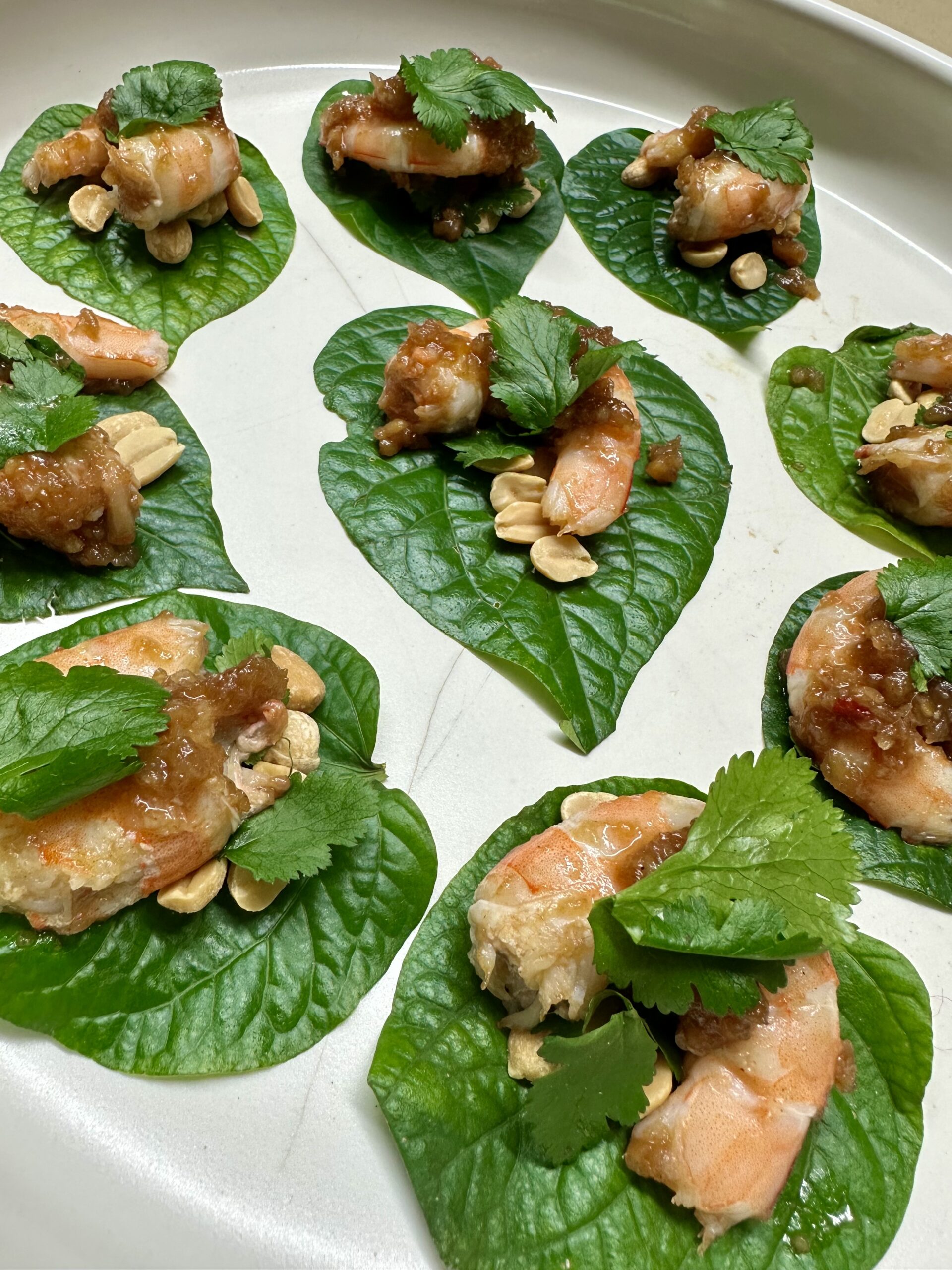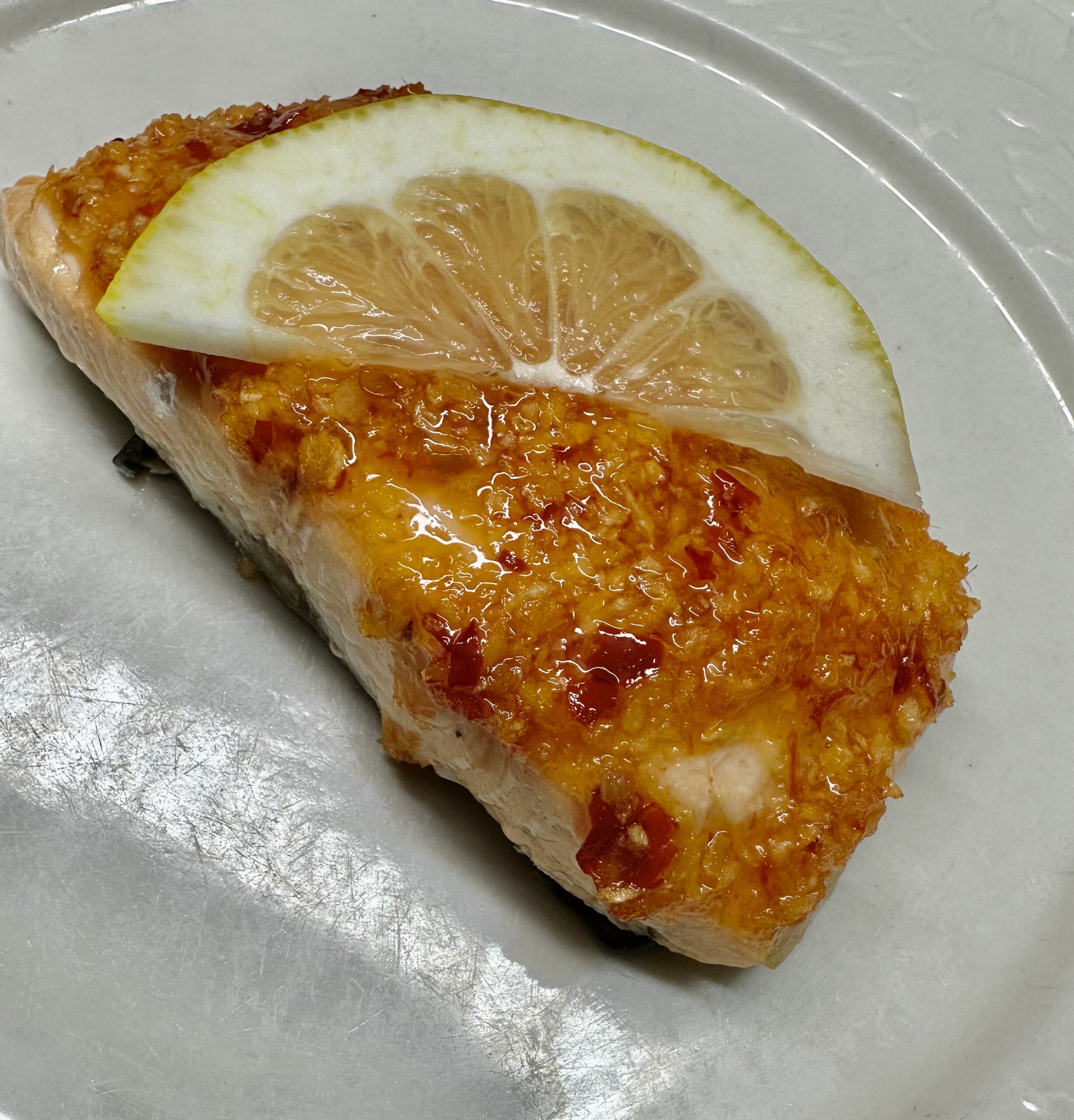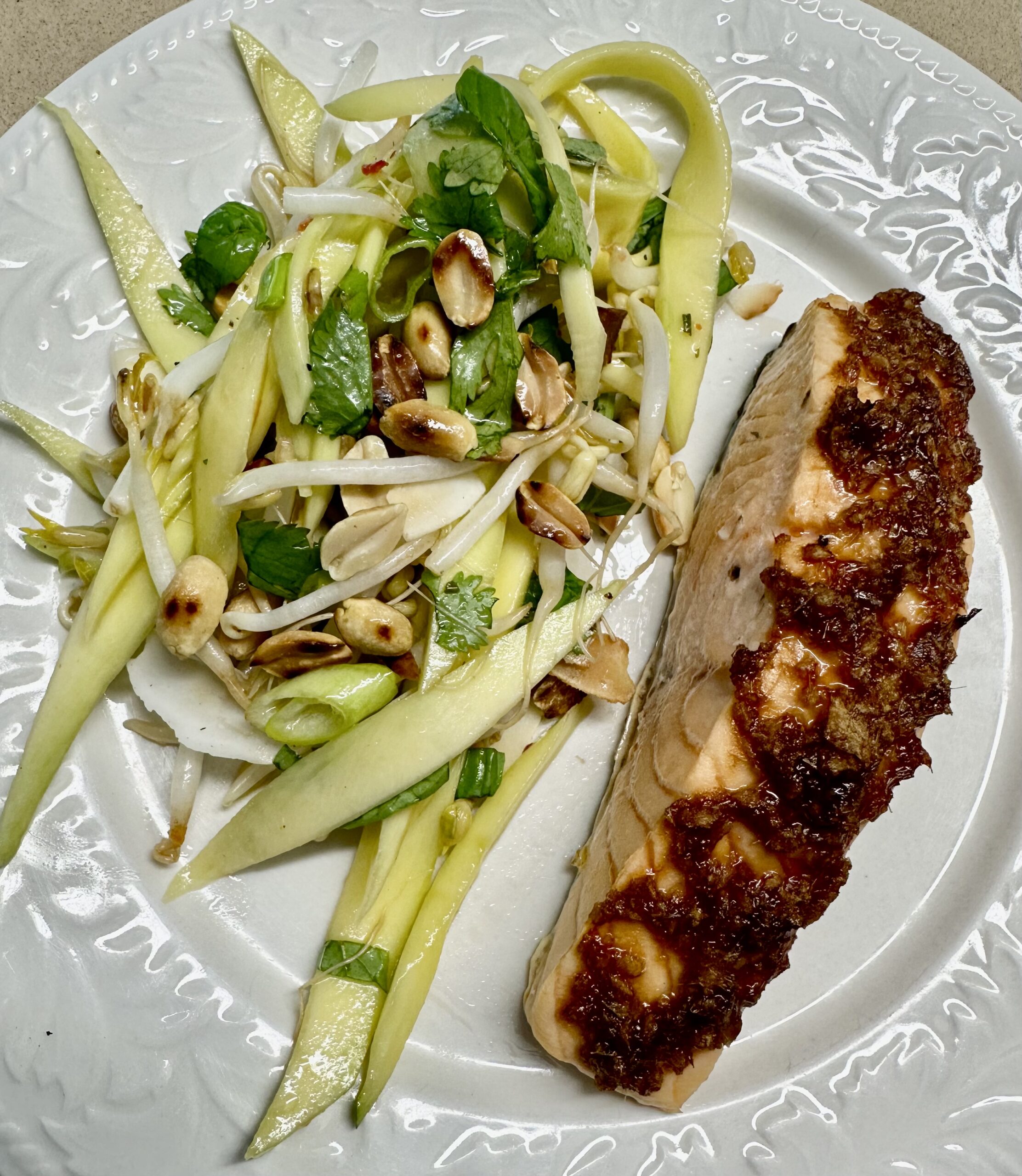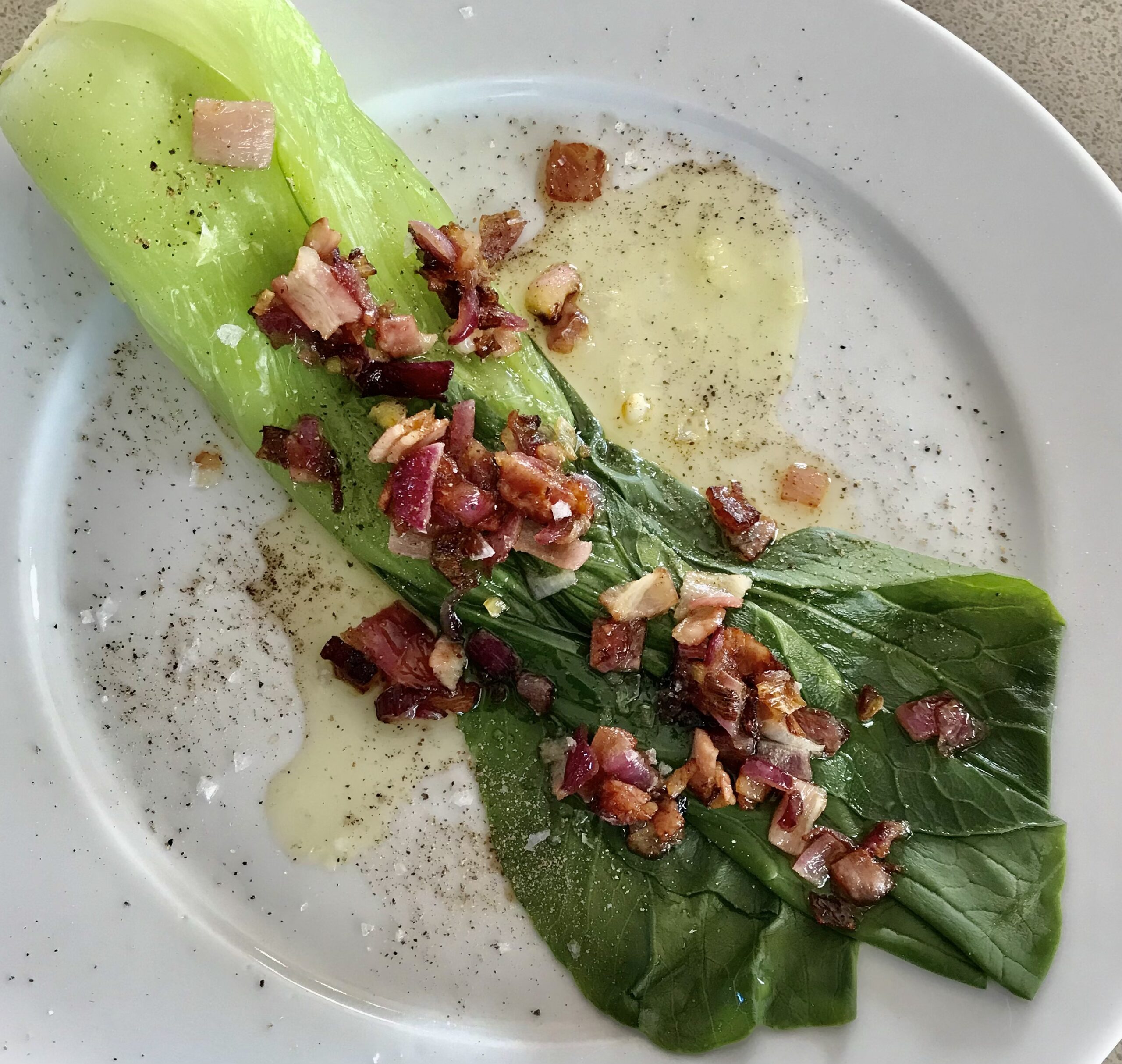Living in Paris some 20 years ago I was introduced to confit, a cooking method where poultry is covered with duck fat or olive oil and cooked at a low temperature for a long time.
Confit comes from the French word confire which means to preserve and is used to describe any type of food that is cooked slowly over a long period as a method of preservation. It dates back to the days when people didn’t have refrigerators and this was a means of making things last longer.
The French mainly use this cooking method with duck, but chicken works just as well and I have also tried it with salmon. They say that confit duck or chicken pieces will keep in the fridge, submerged in the cooking fat, for up to a month, but I wouldn’t recommend leaving it for more than a week, just to be on the safe side. To serve, remove the chicken or duck pieces from the fat and pan fry them on both sides till crisp and golden brown.
The red curry sauce is a real winner. Quick to make and it can be frozen. If you don’t have time to confit the chicken, buy a cooked chicken at the supermarket, take off all the meat and mix it with this delicious sauce. The sauce goes with everything. Try it over steamed broccoli, green beans, noodles or fish.
The coconut rice recipe is also a winner because it requires no attention. It cooks in the oven and comes out beautifully fluffy and dry. This week’s recipe is perfect for entertaining because you can prepare all the elements beforehand.
There are two ways to serve this confit chicken. Either pan fried on top of the rice with the reheated curry sauce spooned over – as shown in the photo. Alternatively, remove and discard the chicken bones and mix the chicken meat (home-made confit or a cooked chicken from the supermarket) into the curry sauce, reheat and serve on top of the rice.
If you make the confit, don’t throw away the cooking oil once the chicken has been removed. Keep it to make the most delicious roast potatoes. Parboil them for 10 minutes, then drain, mix with some of the oil and roast in a hot oven or in an air fryer.
If you want to cut down on the calories in this recipe, use half a tin of coconut milk in the sauce and half in the rice. Add extra water to make up the difference.
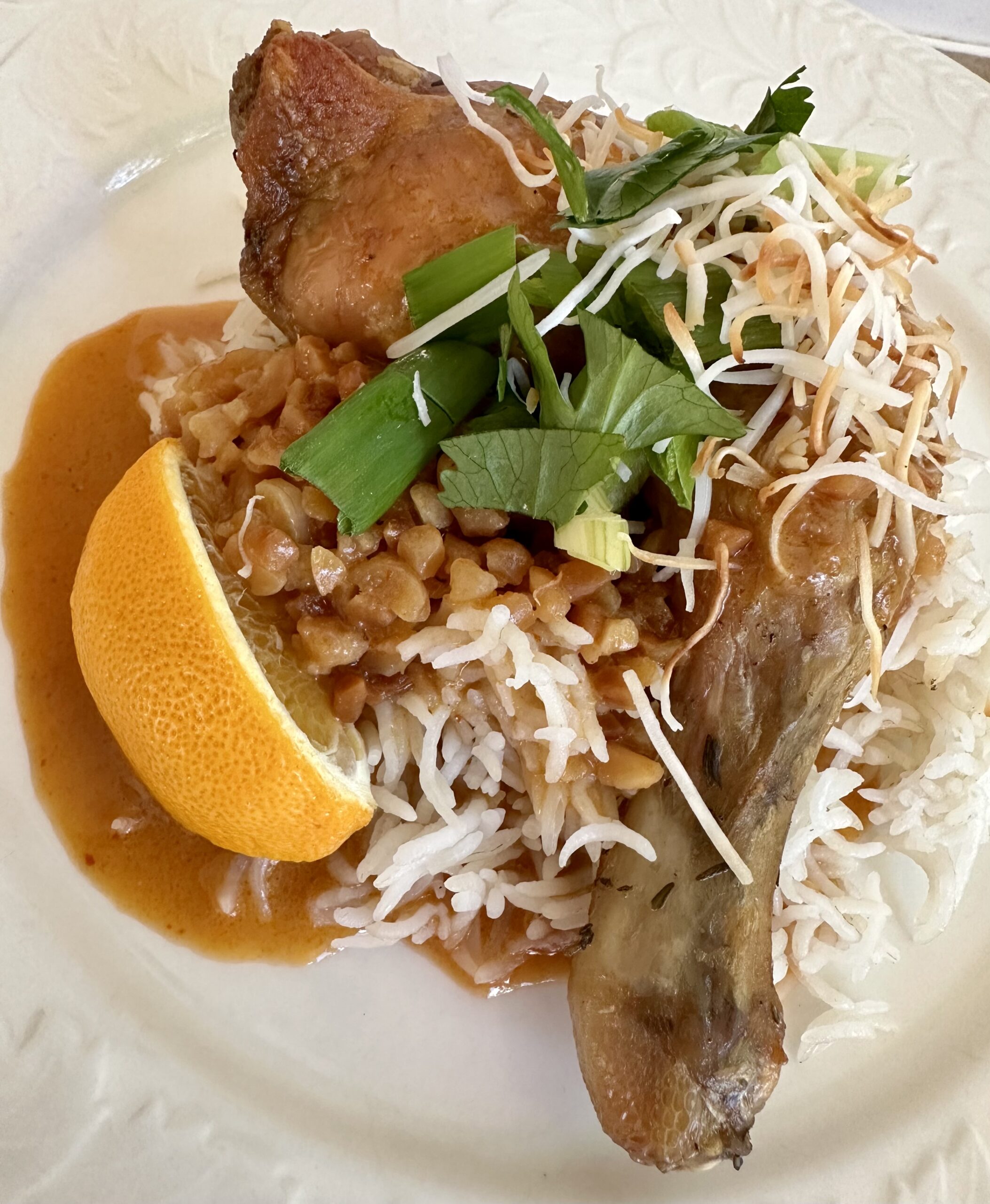
Confit chicken pieces – see recipe
I used 6 chicken Marylands (drumstick and thigh)
Red Curry Sauce:
1 can (400g) coconut milk
2 Tbs peanut butter
2 Tbs red curry paste
2 Tbs fish sauce
2 Tbs lemon or lime juice
3 Tbs brown sugar
1 clove garlic, crushed
1/3 cup finely chopped peanuts
½ cup chicken or vegetable stock
Coconut Rice:
2 cups rice (Basmati or Jasmine)
1 Tbs olive or vegetable oil to grease the casserole
1 can (400g) coconut milk
1 cup water
4 tsp sugar
½ tsp salt
To serve:
Thinly sliced spring onions
Chopped fresh coriander
Lightly toasted coarse coconut
Lemon or lime wedges
Make the confit chicken according to the recipe link or buy a cooked chicken and take all the meat off.
Red Curry Sauce: place all ingredients in a small saucepan and simmer, stirring often, for 10 minutes or until the sauce coats the back of a spoon and reaches the desired consistency. Can be made ahead and refrigerated or frozen until needed.
Coconut Rice: thoroughly rinse the rice with cold water, then cover with cold water and leave overnight or for at least an hour. Drain rice and place in a lightly-oiled heavy casserole with a lid. I used Le Creuset. Add remaining ingredients and mix well. Cover with the lid. Can be made ahead to this point. Bake for 40 minutes in an oven preheated to 180°C. Remove from the oven and stir well about 15 minutes into the cooking time. Fluff with a fork before serving.
To serve: remove the confit chicken pieces from the oil they were cooked in, then fry in a frying pan until crispy and golden brown on both sides. You don’t need to put any oil in the frying pan as the chicken pieces will all have a light coating. Toast the coconut by stirring it in a dry frying pan over moderate heat until lightly coloured.
Serve the chicken on a bed of coconut rice, with half to three quarters of a cup over reheated curry sauce spooned onto each serving. Garnish with the spring onions, coriander, coconut and lemon or lime wedges.
Serves 6
